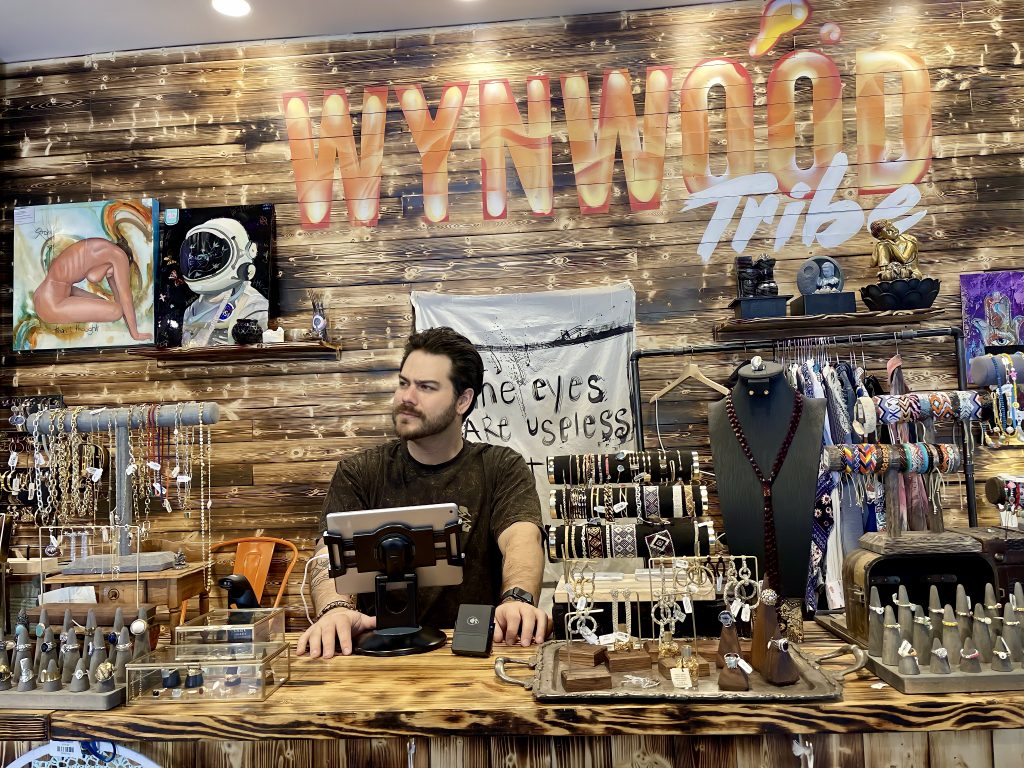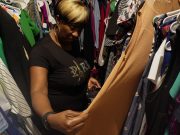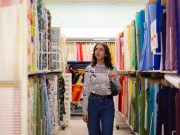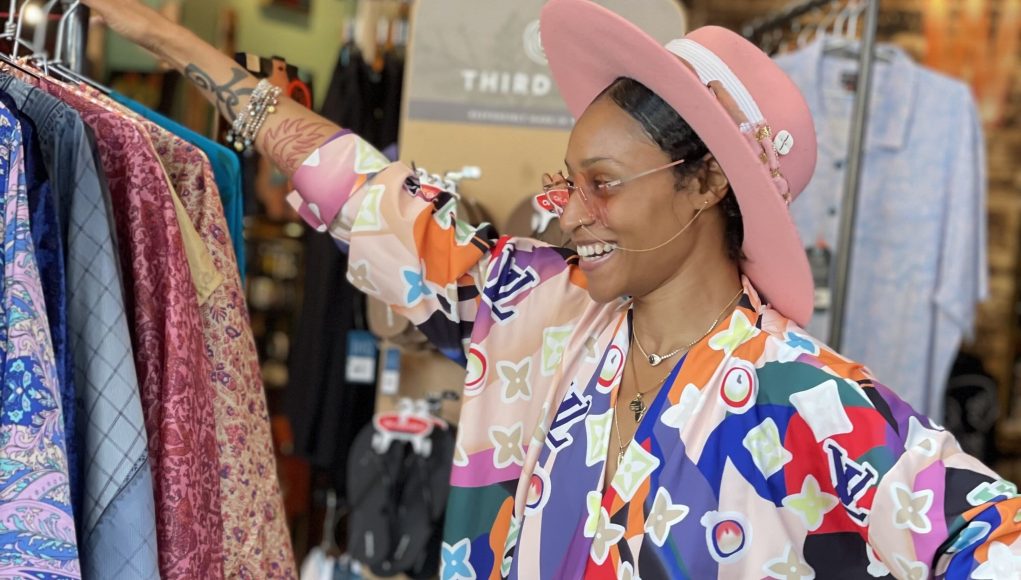Cesar Tijerino was a broke college student when he stopped shopping at H&M.
The 20-year-old Florida International University student grew tired of buying trendy clothes that he would wear only a few times and then throw out.
“Now I honestly believe in buying clothes that I will want to wear often,” he said. “Before I would just carelessly buy and buy clothes, and I wouldn’t notice it was taking up my money unnecessarily.”
So he changed his lifestyle.
He joined the “Slow Fashion Movement,” a worldwide push toward manufacturing clothing from sustainable materials and re-using clothing already manufactured.
That can mean new dresses made of organic cotton or spending a weekend afternoon at thrift shops buying pre-owned jeans — all in the name of reducing the fashion industry’s enormous impact on climate change.
For Tijerino, a change of lifestyle became life-changing.
Before he would buy 10 or 20 shirts, wear one a dozen times, throw it out and pick up some other trendy item. Now, he says, he wears his slow fashion garments many more times than that.
“I can honestly say it has made me more conscious of the environment and now it’s a huge part of my life,” says Tijerino, who has started selling sustainable scarves made of silk and hopes to expand that into a fashion he calls “Moving Backwards,” he says. “I just find it super cool and I think it really matters because I think my generation has the potential to make a huge change in the world.”
The change slow fashion can make has to do with climate change. The fashion industry contributes more to climate change than the air travel and shipping industries combined, according to a report from the foundation of environmental activist Dame Ellen MacArthur.
Sustainable clothing made with eco-friendly, more durable materials are also part of the movement. Manufacturers of sustainable fashion tend to cause less environmental damage than other clothing factories because they use fewer pollution-causing chemicals. The movement also supports fair labor practices and the factories.
Lena Hartog, a founder of the slow fashion movement from the Netherlands, said in an interview that she hopes to grow the movement by increasing the number of slow fashion “ambassadors” around the world and by putting pressure on industry leaders to eliminate fast fashion.
“We’re showing we’re not just one person, we’re with many,” she said.”We are a global group of people who share the same dream of transforming the fashion industry.”
Jimil Ataman, a graduate student at Penn State University, is researching the ethnography of the Slow Fashion Movement for her doctoral dissertation.
She has found that many people think they can’t afford sustainable fashion but if they buy fewer items and reuse their clothing, they don’t spend much more.
“I am researching slow fashion because I am very interested in how we are participating in an everyday form of activism,” she says . “I think this is very meaningful but it doesn’t get a lot of attention in an academic sense and it definitely should.”
In Miami, people’s passion for slow fashion has driven them to open stores selling their garments of choice.
Cindy Hassan, 30, who owns the online sustainable fashion store Mode Revolution, grew up in Venezuela. Upon moving to Miami, she found slow and sustainable fashion a way to help the environment while also expressing her individuality. .
Hassan says people often ask her about the sustainable pieces she wears , and she opened the store to tell more stories about more pieces. She also does pop-up events to showcase slow fashion brands.
“I use slow fashion as a way to bring information and fulfillment to people through the clothes they buy and wear,” she says. “I want everyone to know they can make a change too while wearing cute clothes and they’ll have long-term gratification with sustainable fashion pieces. ”
Slow and sustainable fashion has also come to brick-and-mortar stores. Pedro Roa, 31, sells slow and sustainable fashion at his store Wynwood Tribe, as well as pieces from designers whose clothes may not be fully sustainable, but who may convert their lines to slow fashion.

Roa displays the story behind every piece of clothing in his store on price tags or signs above displays because unlike mass-produced items, these are made with a specific purpose.
“At least some brands are doing something and that’s a start,” he says. “It’ll make a difference in the long run.”
Wynwood, especially, has become a center of the slow and sustainable fashion scene.
Ziann Domenique Osborne is a 35-year-old New Yorker who owns the fashion line ZahZah Gaborr, featuring clothes she makes by hand of sustainable materials.
She embraced slow fashion when she couldn’t afford to shop at retail clothing stores. When she moved to Miami in 2020 and became part of the Wynwood fashion scene, she got inspired to open the sustainable fashion line.
“Sustainable fashion is not just a type of fashion, it’s a lifestyle,” she says . “Now Wynwood is bringing everyone together just like fashion is.”
Some fashionistas say switching their wardrobe to slow or sustainable clothing makes them feel like they’re making a difference.
Julian Gomez, 19, a student at the Miami Fashion Institute at Miami Dade College says sustainable fashion lets him create clothes for his fashion line, Phace, that aren’t merely trendy but have sold for up to $250.
“I try to make my clothes luxurious when it comes to quality while giving it a minimalistic look,” he says . “When I’m making these pieces, I’m really surrendering myself to the process and I’m trying to make something that speaks beyond just being a clothing item.”
Cesar Tijereno, the FIU student who sells silk scarves through his slow fashion brand Moving Backwards, agrees. He wants people to experience the life-changing results that he did when he made the switch.
“We have to think of slow fashion as a cause instead of a trend because we won’t move forward if we treat it like fast fashion, ” he says. “I’m just very passionate about fashion and it’s part of my daily life.”

































